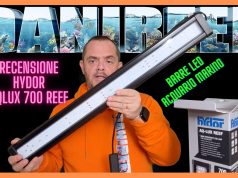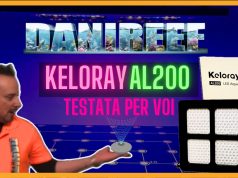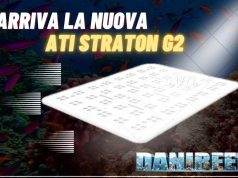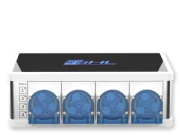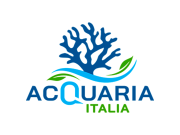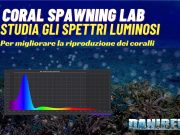How to value these numbers in aquarium?
This is a good question. At first we thought that we could transport these values to the aquarium tout-court. Than we filled the aquarium, insert the probe and redone the measurements. We fazed but, as we have already said in elsewhere, we’re going to talk about this in another article. Basically, while at 20 cm the result is practically the same, as we progressed, thanks to the glass and the water itself reflecting the light, we found even the double of the values measured in air. Obviously this isn’t a detail that can be standardized, so we think that our method of calculation is the most correct, and the best for the comparison of coverages of different ceiling lights.
The comparison with other ceiling lights on the market
Recently we started to use the new Apogee’s Quantum Meter MQ-510. For this we can’t completely compare the data of other ceiling lights because before we used the probe Seneye.
| Energy | Cost | Consumption | Energy/€ | Energy/w | |
| AI Hydra 32 HD at 17 cm | 560.000 | 430 | 90,50 | 1.303 | 6.190 |
| AI Hydra 32 HD at 37 cm | 563.000 | 430 | 90,50 | 1.310 | 6.224 |
| AI Hydra 32 HD at 57 cm | 463.000 | 430 | 90,50 | 1.076 | 5.112 |
| Aqamai LRM at 17 cm | 643.000 | 465 | 90,88 | 1.382 | 7.071 |
| Aqamai LRM at 37 cm | 722.000 | 465 | 90,88 | 1.552 | 7.941 |
| Aqamai LRM at 57 cm | 616.000 | 465 | 90,88 | 1.326 | 6.783 |
| Aqamai LRS at 17 cm | 276.000 | 289 | 47,59 | 955 | 5.797 |
| Aqamai LRS at 37 cm | 312.000 | 289 | 47,59 | 1.078 | 6.547 |
| Aqamai LRS at 57 cm | 254.000 | 289 | 47,59 | 880 | 5.343 |
| ATI Straton at 17 cm | 2.018.232 | 890 | 211 | 2.268 | 9.565 |
| ATI Straton at 37 cm | 1.409.595 | 890 | 211 | 1.584 | 6.681 |
| ATI Straton at 57 cm | 957.209 | 890 | 211 | 1.076 | 4.537 |
| Cetus 2 at 17 cm | 410.000 | 215 | 60,68 | 1.906 | 6.756 |
| Cetus 2 at 37 cm | 291.000 | 215 | 60,68 | 1.353 | 4.793 |
| Cetus 2 at 57 cm | 174.000 | 215 | 60,68 | 807 | 2.861 |
| Orphek OR2 Blue Plus 120 cm at 17 cm | 323.000 | 180 | 54,69 | 1.794 | 5.906 |
| Orphek OR2 Blue Plus 120 cm at 37 cm | 291.000 | 180 | 54,69 | 1.616 | 5.321 |
| Orphek OR2 Blue Plus 120 cm at 57 cm | 259.000 | 180 | 54,69 | 1.438 | 4.736 |
| Orphek OR2 Reef Day Plus 120 cm at 17 cm | 255.000 | 180 | 54,69 | 1.418 | 4.667 |
| Orphek OR2 Reef Day Plus 120 cm at 37 cm | 233.000 | 180 | 54.69 | 1.292 | 4.252 |
| Orphek OR2 Reef Day Plus 120 cm at 57 cm | 225.000 | 180 | 54.69 | 1.251 | 4.117 |
| Philips CoralCare at 17 cm | 1.859.000 | 749 | 190,5 | 2.481 | 9.756 |
| Philips CoralCare at 37 cm | 1.341.000 | 749 | 190,5 | 1.790 | 7.037 |
| Philips CoralCare ta 57 cm | 933.000 | 749 | 190,5 | 1.246 | 4.899 |
| Philips CoralCare Gen2 at 17 cm | 1.330.430 | 749 | 168,5 | 1.780 | 7.914 |
| Philips CoralCare Gen2 at 37 cm | 920.277 | 749 | 168,5 | 1.229 | 5.461 |
| Philips CoralCare Gen2 at 57 cm | 631.087 | 749 | 168,5 | 843 | 3.745 |
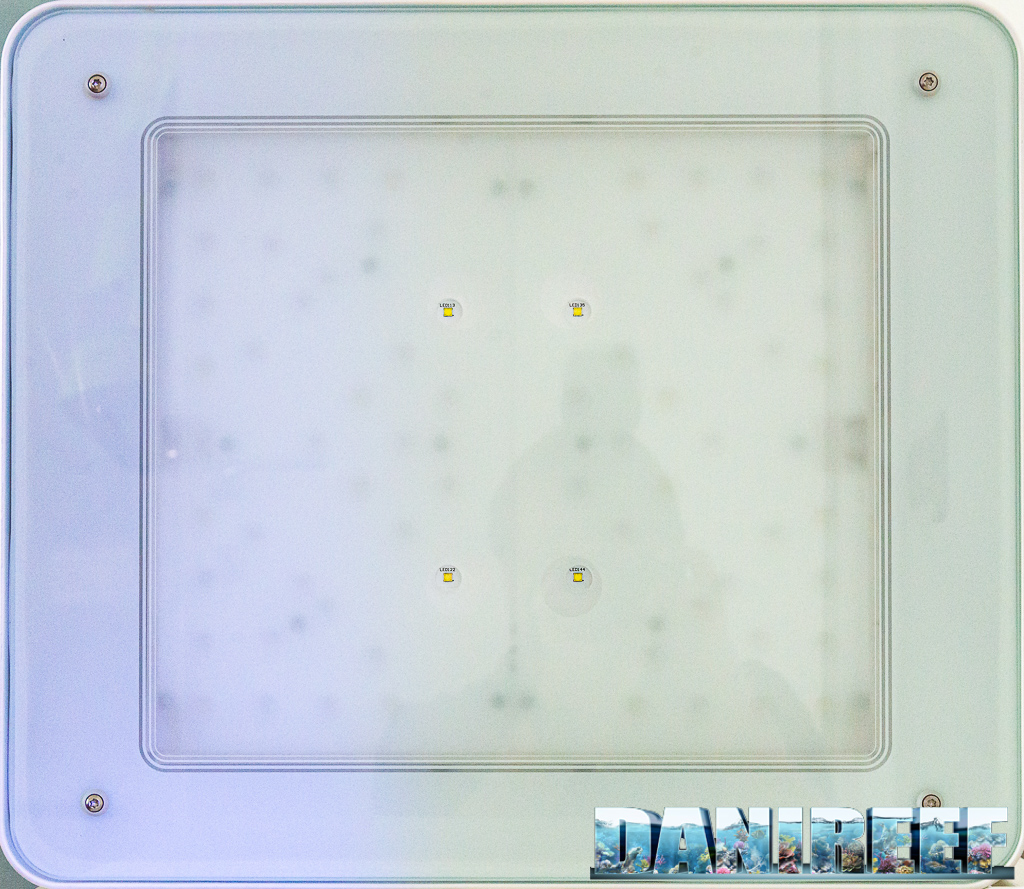
Both for what regards the energy per watt, considering the PAR, and for the energy per euro, it’s lower than the old Philips Coralcare and the ATI Straton.
PAR yes PAR no
We should spend more words here. The PAR express the photosynthetically active radiation (PAR). It’s a measure of the energy of the solar radiation intercepted by the chlorophyll a and b in plants. It’s a measure of the actual available energy for the photosynthesis, that’s lower than the total energy coming from the Sun, because the absorption spectrum of the chlorophyll is not very wide. The PAR are about 41% of the total solar radiation. It’s concentrated in the red and blue bands, with peaks of 430 and 680 nm of wavelength corresponding to the visible radiation.
At Philips they studied in depth this topic in order to improve their ceiling lights. They tried an unconventional, but very thought out way, to achieve their goal.
Old and new CoralCare: which differences?
The new CoralCare Gen2 uses the new LED Lumileds and the spectrum is optimized for the growth and wealth of the corals. In fact, it has more LED at 470nm in order to improve even more the fluorescence. Some years ago the problem with this wavelength was that the 470 nm LED had a WPE (wall-plug efficiency) lower that the 450 nm LED, and it didn’t compensate that this was the best wavelength for corals. This new generation of LED lowered the difference of efficiency enough that now it’s more convenient for the corals (in terms of usability) and for the whole performance of the spectrum.
From this derives also the decreasing of the power about 10%. This is due to the thinner design of the ceiling light that reduced the heatsink from 10 to 7 kg. Even with more efficient LED and a more efficient optical system, the maximum capacity of this design is calculated in 170 W. But given the fact that the main part of the customers never used the previous CoralCares at 100% of their power, they don’t think this power reduction is such a big problem.
There are much less LED, 68 in place of 114, because LED technologies are changing, as well as the possibilities of any single device. Today we can built any ceiling light using LED at low power, at medium power or high power, and in different types, multi-chip, flip-chip, double stack, ecc., and every choice determines the specifics of its own LED. Last but not least, the WPE of the LED is extremely important. The higher this value, the more the energy that enters the LED is converted into light (and less into thermal heat). Today the CoralCare Gen2 can use the LED with a little higher current without penalizing the efficiency. The LED now are used at about 750mA while the previous CoralCare used 600mA. The consequence of all these considerations, combined with the optical system (color fusion and light distribution) led Philips to state that 68 LED were the best for the most efficient use by the corals.
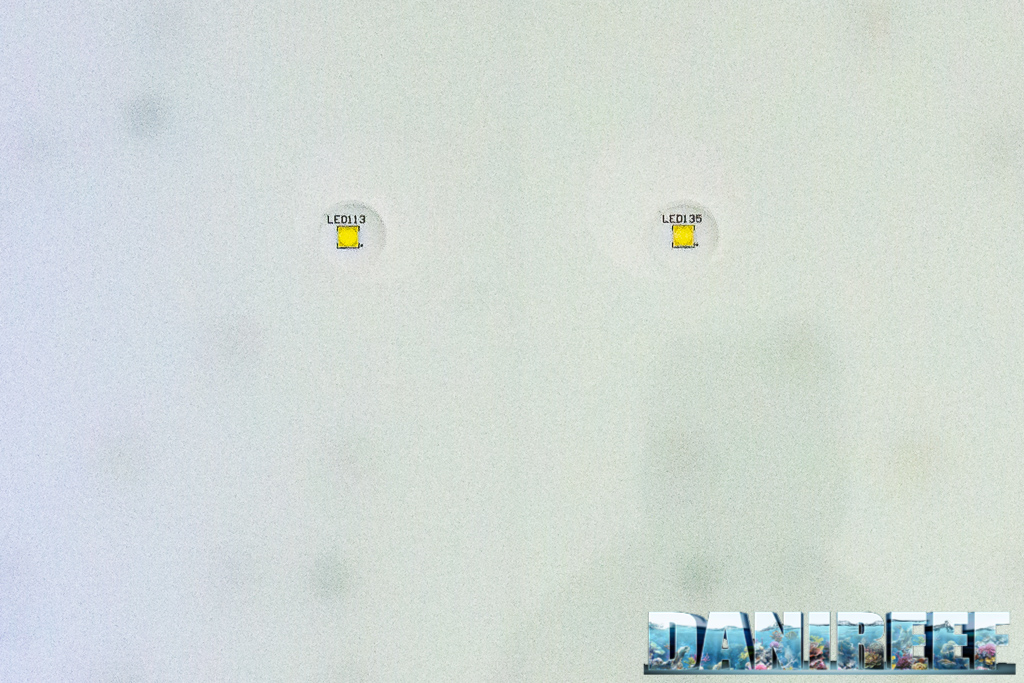
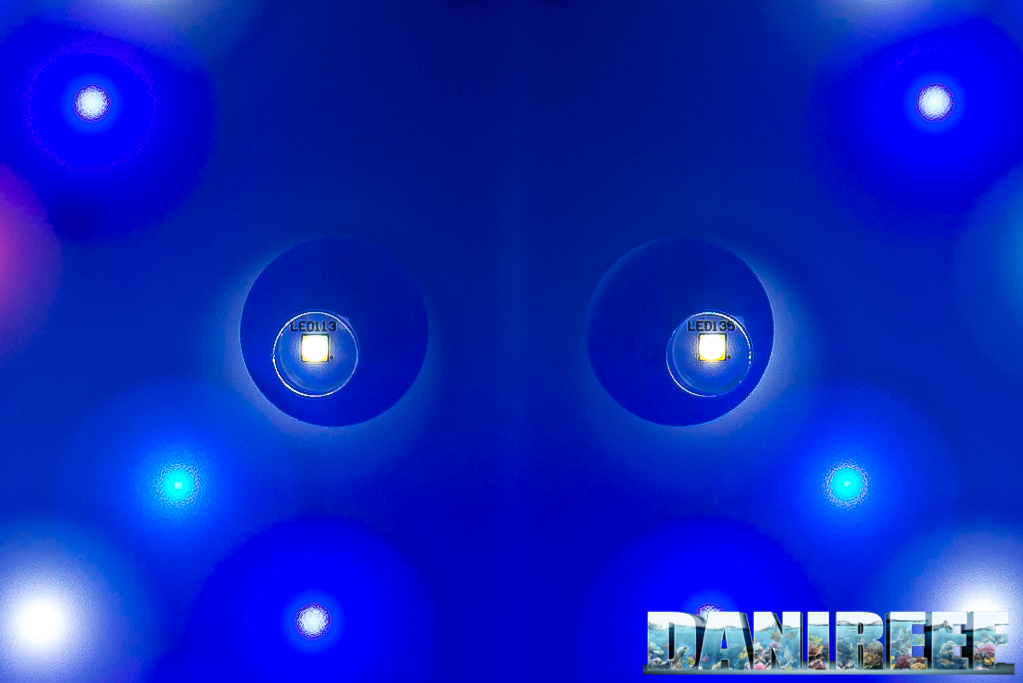
This LED to a lower PAR value, as we have seen. Practically speaking, Philips says, the difference in PAR is almost insignificant because you can adopt a lower distance between ceiling light and water, because of its bigger active surface while the light is even more uniform, and using the 100% insted of lowering the channels like we were used to do. Moreover, the spectre suits more the needs of the corals.
We have to remind that the PAR value doesn’t refer to the usability for the coral, but to the covering of the aquarium. A higher or lower PAR doesn’t automatically mean that the coral will grow faster or slower. The PAR value should always follow step by step the analysis of the light spectre in order to have a realistic comparison: in this way we can use the PAR value instead of very expensive measuring devices. Keeping this frame in mind, Philips assures that the performances on the corals have the same quality of the ones before, only by using less electric power.
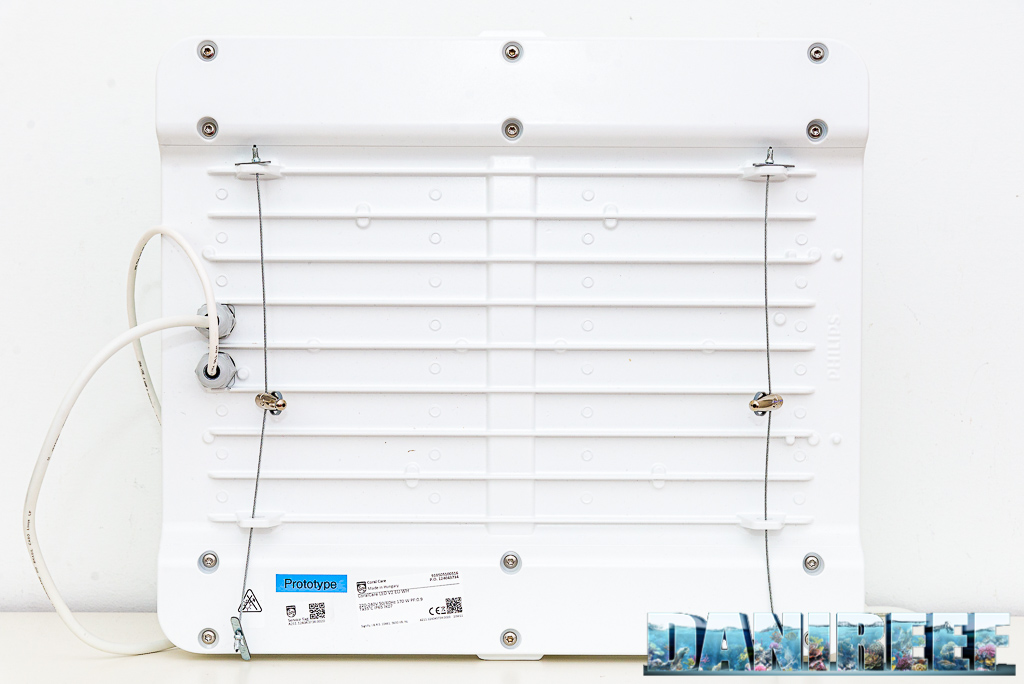
Maintenance costs
The Philips CoralCare GEN2 ceiling lights cost 749 euro.
The absorbed power is 168,5 watt, so it has a relationship cost/watt of 4,44 euro per watt. In order to do a comparison with the other ceiling lights you can refer to the following chart. Notice that the ceiling lights are sorted by decreasing efficiency, so the best are at the top.
| Ceiling light | Price | Consumption | Relationship euro per watt | References |
| Orphek OR2 Blue Plus | 180 USD | 54.7 w | 3,3 euro per watt | DaniReef LAB |
| Orphek OR2 Reef Day Plus | 180 USD | 54,7 w | 3,3 euro per watt | DaniReef LAB |
| Cetus 2 | 215 € | 60,7 w | 3,5 euro per watt | DaniReef LAB |
| Philips Coralcare 2019 | 749 € | 190 w | 3,9 euro per watt | DaniReef LAB |
| Maxspect Ethereal | 500 € | 126 w | 4,0 euro per watt | Italian test |
| ATI Straton | 890 € | 211 w | 4,22 euro per watt | DaniReef LAB |
| Philips CoralCare GEN2 2020 | 749 € | 168,5 w | 4,44 euro per watt | DaniReef LAB |
| Radion XR30w G2 PRO | 790 € | 170 w | 4,7 euro per watt | Italian review |
| AI Hydra 32 HD | 430 € | 90,5 w | 4,75 euro per watt | DaniReef LAB |
| Radion XR30w G4 PRO | 915 € | 190 w | 4,84 euro per watt | Italian article |
| OceanLed Sunrise 600 | 870 € | 180 w | 4,8 euro per watt | Italian test |
| Orphek Atlantik V4 | 1099 € | 226 w | 4,9 euro per watt | Test |
| Radion XR30w G2 | 690 € | 140 w | 4,9 euro per watt | Italian review |
| Radion XR30w G4 | 760 € | 150 w | 5,1 euro per watt | Italian article |
| Aqamai LRM | 465 € | 87,5 w | 5,1 euro per watt | DaniReef LAB |
| Zetlight UFO ZE-8000 | 500 € | 91,5 w | 5,5 euro per watt | Test |
| Aqamai LRS | 289 € | 47,6 w | 6,1 euro per watt | DaniReef LAB |
| CEAB Slide & Led | 2.700 € | 275 w | 9,8 euro per watt | Review |
| Sicce GNC 466 | 1.592 € | 120 w | 13,3 euro per watt | Review |
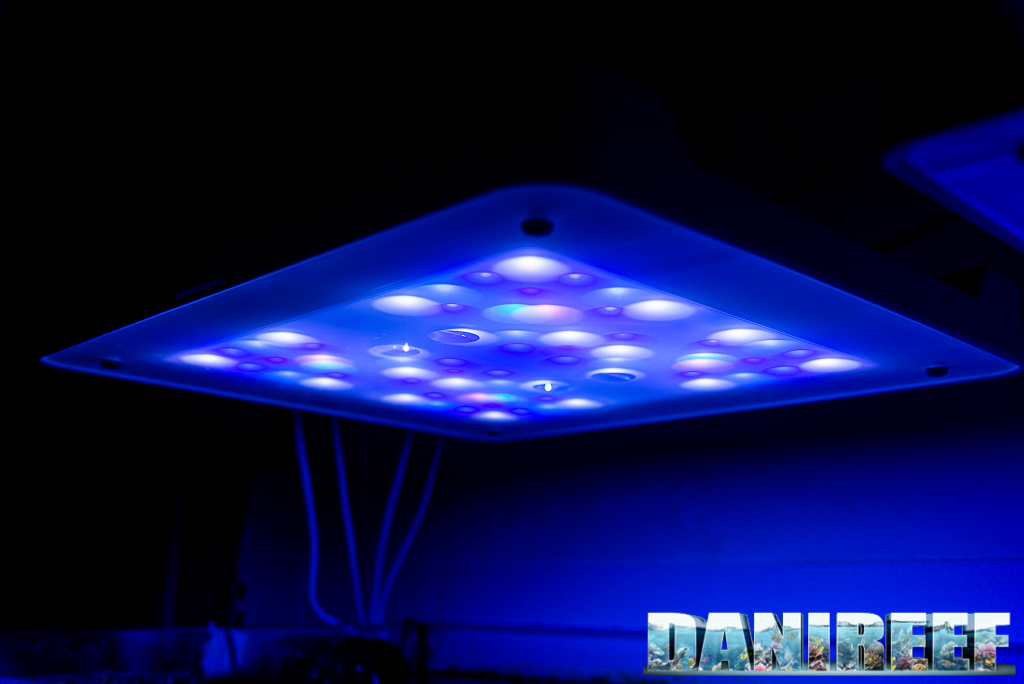
The ceiling light is very well built, heavy and solid, more and more pleasant then the previous one. It’s very easy to be programmed and with more attention to the LED type and the distribution of the light that Philips has from the experience in the lighting sector. The energy and economic efficiency is in the average but if we trust Philips this is only one side of the truth. The power supply is integrated in the shell and the app works with bluetooth. The values are great for nanoreef but also for aquariums until 70 cm per side, as both to breed SPS or anything else. Increasing the dimensions the covering decreases, because there arent’ glasses that reflect the light, so I suggest 2 ceiling lights in 120 cm and 3 in 180 cm. The global expressed energy is good and linear on the water column.
Questions and comments, as always, are welcomed.
Philips ceiling lights can be purchased on their official site (here) or by some retailers. The distribution in Italy, anyway, is directly edited by Philips.







